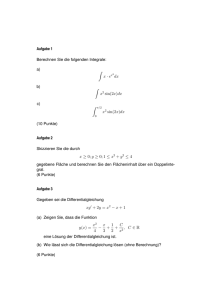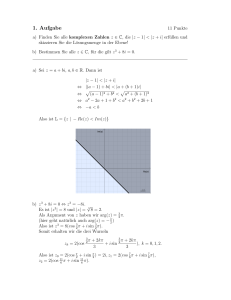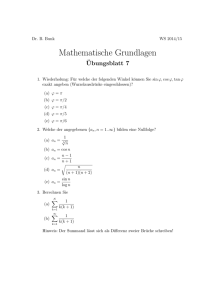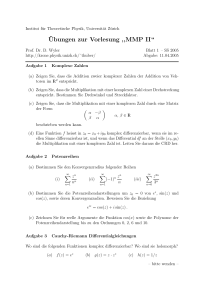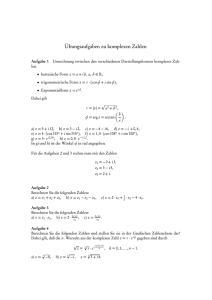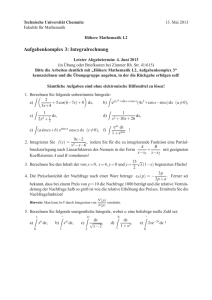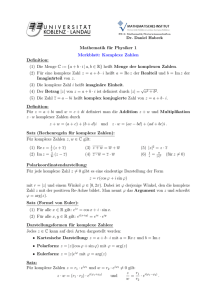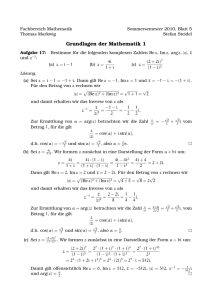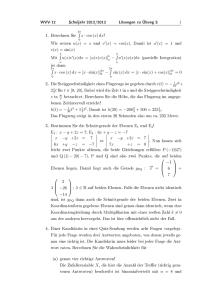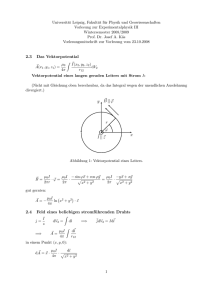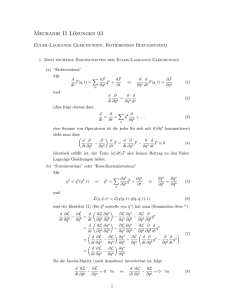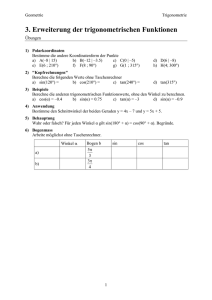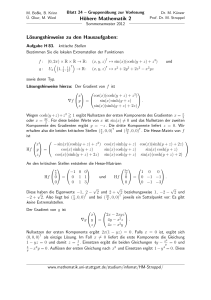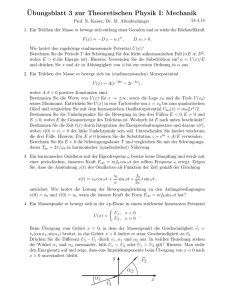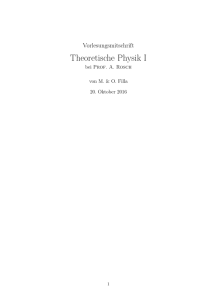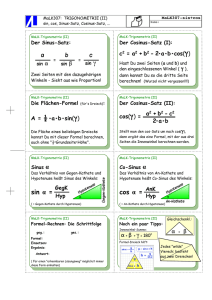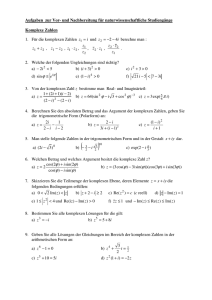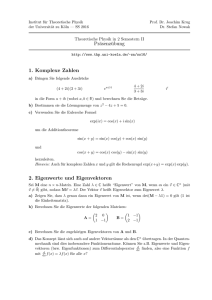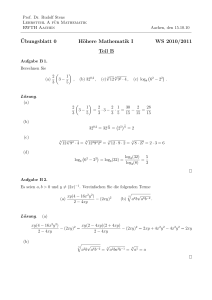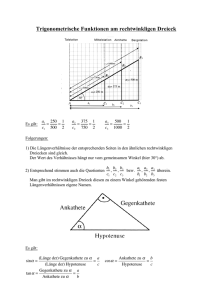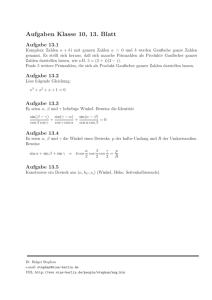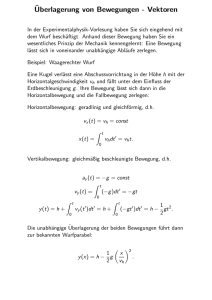Musterlösung 1 - D-MATH
Werbung
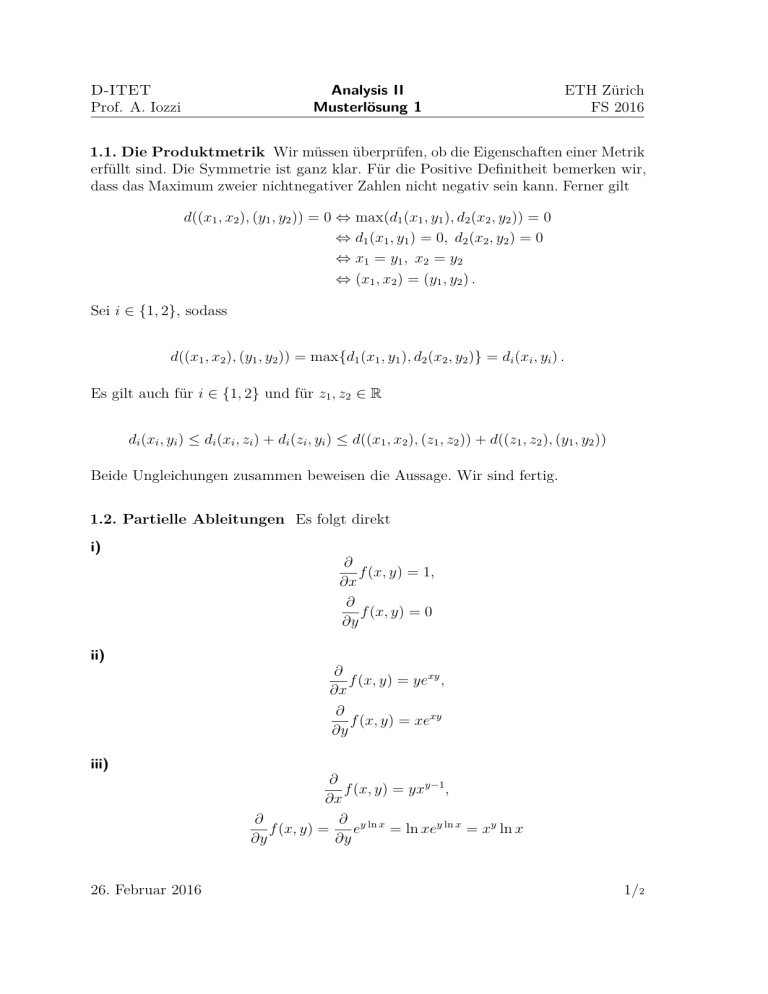
Analysis II
Musterlösung 1
D-ITET
Prof. A. Iozzi
ETH Zürich
FS 2016
1.1. Die Produktmetrik Wir müssen überprüfen, ob die Eigenschaften einer Metrik
erfüllt sind. Die Symmetrie ist ganz klar. Für die Positive Definitheit bemerken wir,
dass das Maximum zweier nichtnegativer Zahlen nicht negativ sein kann. Ferner gilt
d((x1 , x2 ), (y1 , y2 )) = 0 ⇔ max(d1 (x1 , y1 ), d2 (x2 , y2 )) = 0
⇔ d1 (x1 , y1 ) = 0, d2 (x2 , y2 ) = 0
⇔ x1 = y1 , x2 = y2
⇔ (x1 , x2 ) = (y1 , y2 ) .
Sei i ∈ {1, 2}, sodass
d((x1 , x2 ), (y1 , y2 )) = max{d1 (x1 , y1 ), d2 (x2 , y2 )} = di (xi , yi ) .
Es gilt auch für i ∈ {1, 2} und für z1 , z2 ∈ R
di (xi , yi ) ≤ di (xi , zi ) + di (zi , yi ) ≤ d((x1 , x2 ), (z1 , z2 )) + d((z1 , z2 ), (y1 , y2 ))
Beide Ungleichungen zusammen beweisen die Aussage. Wir sind fertig.
1.2. Partielle Ableitungen Es folgt direkt
i)
∂
f (x, y) = 1,
∂x
∂
f (x, y) = 0
∂y
ii)
∂
f (x, y) = yexy ,
∂x
∂
f (x, y) = xexy
∂y
iii)
∂
f (x, y) = yxy−1 ,
∂x
∂
∂ y ln x
f (x, y) =
e
= ln xey ln x = xy ln x
∂y
∂y
26. Februar 2016
1/2
ETH Zürich
FS 2016
Analysis II
Musterlösung 1
D-ITET
Prof. A. Iozzi
iv)
∂
(x2 + y 2 ) − (x − y)2x
y 2 − x2 + 2xy
f (x, y) =
=
,
∂x
(x2 + y 2 )2
(x2 + y 2 )2
−(x2 + y 2 ) − (x − y)2y
∂
y 2 − x2 − 2xy
f (x, y) =
=
∂y
(x2 + y 2 )2
(x2 + y 2 )2
v)
∂
f (x, y) = 2xy sin(xy) + x2 y 2 cos(xy),
∂x
∂
f (x, y) = x2 sin(xy) + x3 y cos(xy)
∂y
vi)
∂
f (x, y, z) = y 2 z 3 ,
∂x
∂
f (x, y, z) = 2xyz 3 ,
∂y
∂
f (x, y, z) = 3xy 2 z 2
∂z
1.3. Stetigkeit Es gilt
|x − 1||y − 1|3
|(x − 1)(y − 1)3 |
≤
= |x − 1|(y − 1)2 .
(x − 1)2 + |y − 1|
|y − 1|
√ √
Sei > 0. Wir wählen δ = min( , 4 ). Deshalb folgt für alle (x, y) mit
||(x, y) − (1, 1)|| < δ ,
dass
|x − 1|(y − 1)2 <
√ √
=
gilt, d.h. lim(x,y)→(1,1) g(x, y) = 0. Aber an der Stelle (1, 1) ist g gleich −π und daher
kann sie nicht stetig sein.
2/2
26. Februar 2016
